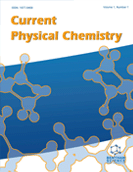Abstract
Introduction: Owing to the restoration of hydroxyl groups, cellulose acetate fibers can be dyed with direct dyes. There are some drawbacks in the conventional deacetylation process of cellulose acetate from environmental point of view.
Methods: This process involves high temperature, alkalinity and large volume of effluent. The goal of this work is to improve the dyeing properties of cellulose acetate fabric using an eco-friendly treatment process. In this paper, cellulose acetate fabric was treated with ultraviolet light (UVB) at an air pressure of 1 atm to improve dyeability. Then, the untreated and UV treated fabrics were dyed with direct and disperse dyes. UV treated cellulose acetate fabric showed higher dye adsorption compare to that of untreated cellulose acetate fabric. Five adsorption isotherm models including sold solution, Langmuir, Freundlich, Temkin and BET were applied to determine the adsorption behavior. At all temperatures studied, experimental data were better fitted with the Freundlich and Nernst models for direct and disperse dyes respectively. Thermodynamic parameters such as change in free energy (ΔG0), the enthalpy (ΔH0), and the entropy (ΔS0) were also evaluated.
Results: The calculated thermodynamic values showed that the adsorption of these dyes onto the cellulose acetate fabric was a physical adsorption process and endothermic in nature. These data also implied that the adsorption of direct dye onto cellulose acetate fabric was spontaneous at the experimental temperature range and adsorption of disperse dyes can be spontaneous at higher temperatures. Moreover, the ΔG0 values for the adsorption of disperse dyes onto the UV-treated fabrics were less than those for untreated fabrics suggesting that UV treated fabrics require less external energy.
Conclusion: Among the kinetic models studied, it was found that the pseudo second-order kinetic model was the best model to describe the dye sorption process on the UV treated and untreated cellulose acetate fabrics. The UV treatment led to an improvement in the boundary layer diffusion effect.
Graphical Abstract
[http://dx.doi.org/10.3109/10242422.2011.638713]
[http://dx.doi.org/10.1002/masy.200850210]
[http://dx.doi.org/10.1016/j.jcis.2010.09.015] [PMID: 20932537]
[http://dx.doi.org/10.1155/2017/3125413]
[http://dx.doi.org/10.1002/app.13551]
[http://dx.doi.org/10.1002/polb.10261]
[http://dx.doi.org/10.1021/bm0496413] [PMID: 15638515]
[http://dx.doi.org/10.1002/app.12941]
[http://dx.doi.org/10.1111/j.1478-4408.2012.00393.x]
[http://dx.doi.org/10.1016/S0266-3538(00)00168-8]
[http://dx.doi.org/10.1155/2014/363079]
[http://dx.doi.org/10.1007/s12221-009-0781-6]
[http://dx.doi.org/10.1016/j.apsusc.2010.07.005]
[http://dx.doi.org/10.1021/la991353i]
[http://dx.doi.org/10.1016/S0039-6028(02)01367-5]
[http://dx.doi.org/10.1016/j.matlet.2017.12.029]
[http://dx.doi.org/10.15244/pjoes/76033]
[http://dx.doi.org/10.2174/1874464812666190722121702]
[http://dx.doi.org/10.13005/ojc/330657]
[http://dx.doi.org/10.1111/j.1478-4408.1964.tb02568.x]
[http://dx.doi.org/10.5004/dwt.2019.23323]
[http://dx.doi.org/10.2174/2405520413666200207114627]
[http://dx.doi.org/10.2174/2210681209666190618112723]
[http://dx.doi.org/10.2174/2405520412666190618144005]
[http://dx.doi.org/10.2174/2405520412666191019101828]
[http://dx.doi.org/10.1016/j.apgeochem.2006.09.010]
[http://dx.doi.org/10.1016/j.jhazmat.2007.08.070] [PMID: 17919814]
[http://dx.doi.org/10.2174/2210681209666190412141442]
[http://dx.doi.org/10.1016/j.jhazmat.2006.09.083] [PMID: 17081687]
[http://dx.doi.org/10.1016/j.jcis.2004.07.035] [PMID: 15476772]
[http://dx.doi.org/10.3390/catal10070727]
[http://dx.doi.org/10.1016/j.seppur.2007.10.002]
[http://dx.doi.org/10.1016/S0143-7208(02)00025-6]
[http://dx.doi.org/10.1016/j.jcis.2008.08.038] [PMID: 18786679]
[http://dx.doi.org/10.1016/j.jhazmat.2008.12.043] [PMID: 19150173]
[http://dx.doi.org/10.17344/acsi.2019.5093] [PMID: 34057501]
[http://dx.doi.org/10.1016/j.jhazmat.2009.11.110] [PMID: 20036052]
[http://dx.doi.org/10.1016/j.wri.2014.06.002]
[http://dx.doi.org/10.3390/pr7110855]
[http://dx.doi.org/10.3390/su14063640]
[http://dx.doi.org/10.1016/j.jiec.2013.12.035]
[http://dx.doi.org/10.1002/eng2.12083]
[http://dx.doi.org/10.1002/clen.201000077]
[http://dx.doi.org/10.1177/155892501400900308]
[http://dx.doi.org/10.1002/app.37666]
[http://dx.doi.org/10.1080/00405000.2013.842290]

















